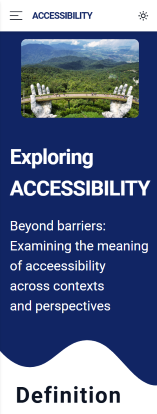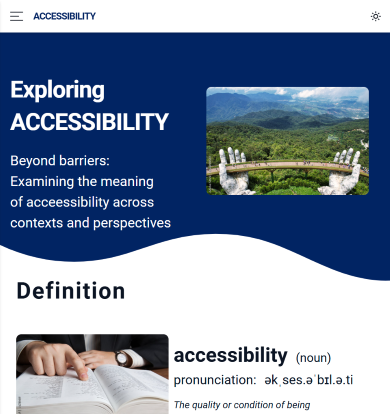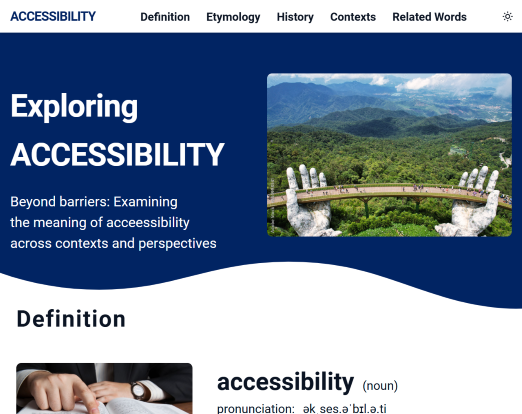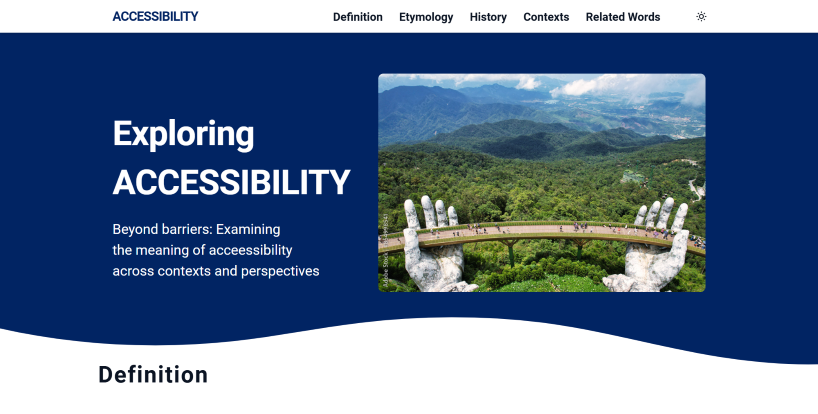Exploring Accessibility
You can see this word-site at https://exploring-accessibility.netlify.app/ , or at https://exploring-accessibility.netlify.
Technical details
- Estimated work-time (in hours): 30
- Number of pages: 1
- Browser Support: Chrome, Edge, Opera, Brave, Safari, Firefox, Safari
- Responsiveness and/or adaptability: It is responsive. It is progressive enhanced. It is adaptive.
- Validity: HTML valid. CSS valid. Accessibility valid.
Additional utilities that have been used
- Preprocessors: - SASS -
- CSS libraries for layout:
- Frameworks:
- Fonts:
Optimization elements
- HTML structure: Separate CSS from JS files. Include JS file at the bottom of HTML.
- CSS libraries for layout: none
- Images: - -
Other details
- Responsiveness elements: Responsive images and layout, dark mode option for individuals with low vision, high-contrast color scheme, simple desig
- Personal contributions: The word accessibility has a rich history, originating from Latin and evolving over centuries. Initially, it meant "easy to reach" in a physical sense. By the 15th century, it expanded to include intellectual and conceptual approachability, reflecting the era’s cultural and scientific advancements, like the printing press and the Renaissance movement with thinkers such as Machiavelli and Erasmus. In the 20th century, accessibility became integral to discussions on inclusivity in technology and design, encouraged by inventions like the computer and the Internet. Interestingly, the word is etymologically linked to "accessory," meaning something that enhances convenience—an idea that resonates with the essence of acce



